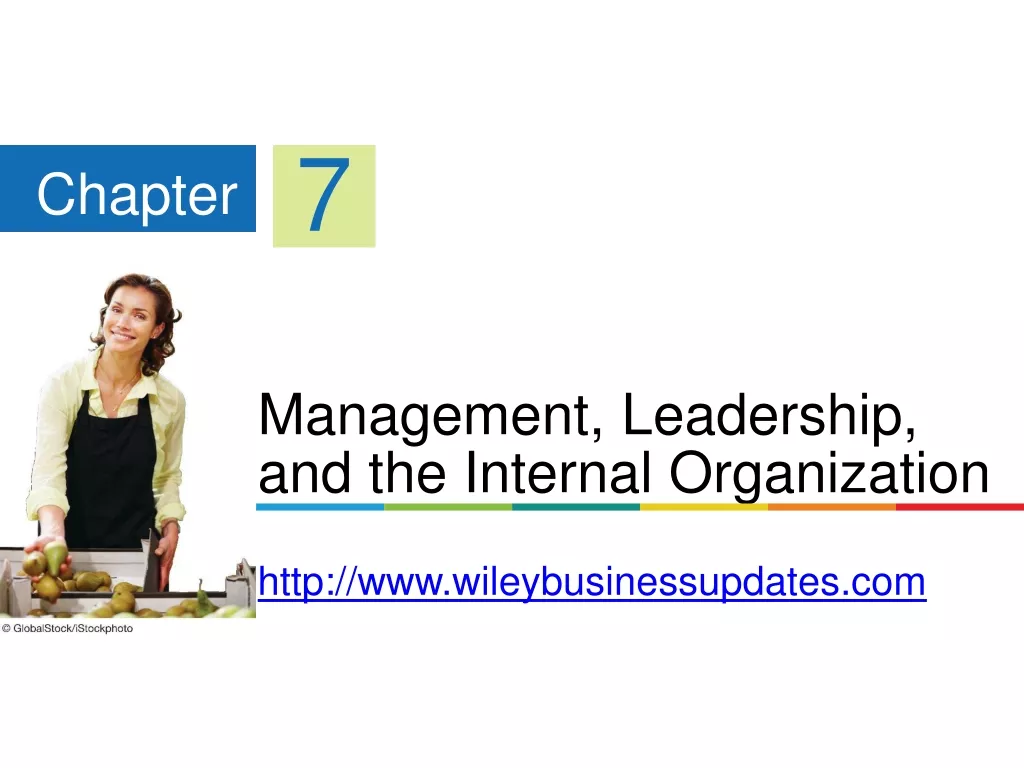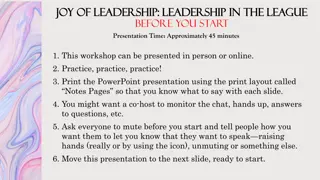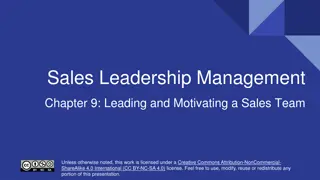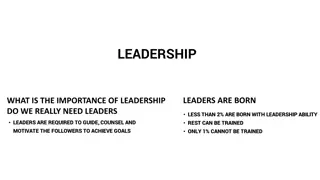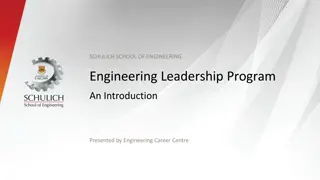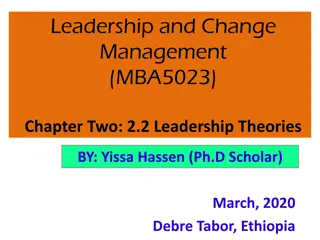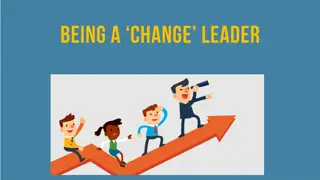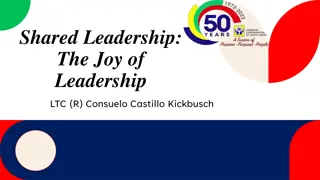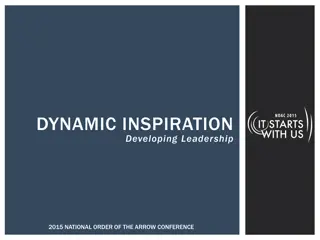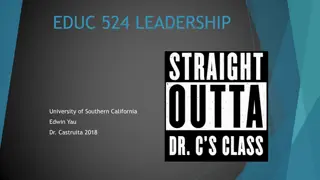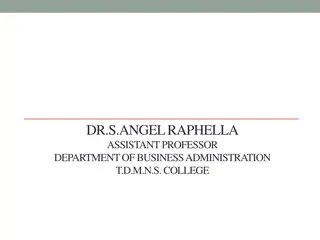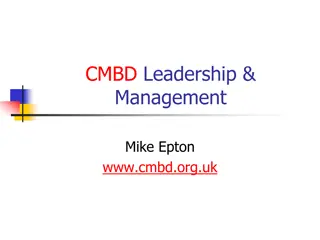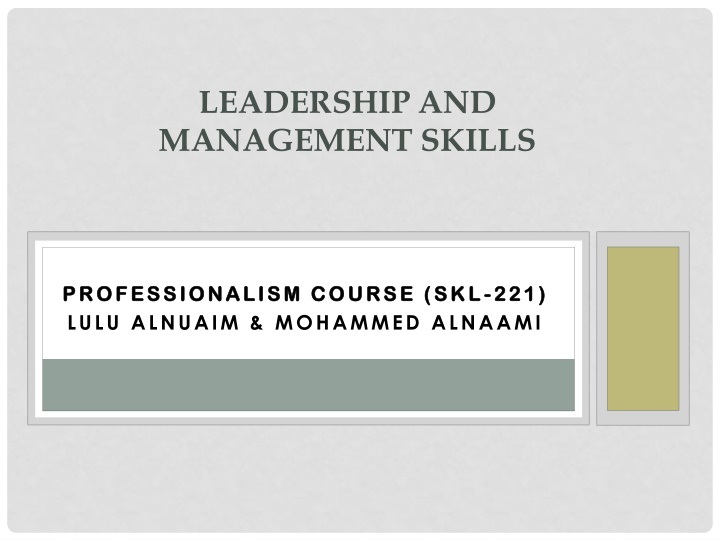
Enhancing Leadership and Management Skills: Course Overview & Objectives
Explore the Leadership and Management Skills Professionalism Course (SKL-221) focusing on sharpening awareness in leadership, developing leaders, and working effectively in healthcare teams. Discover specific session objectives, proposed definitions of leadership, concepts of leadership and management, and various leadership theories.
Download Presentation

Please find below an Image/Link to download the presentation.
The content on the website is provided AS IS for your information and personal use only. It may not be sold, licensed, or shared on other websites without obtaining consent from the author. If you encounter any issues during the download, it is possible that the publisher has removed the file from their server.
You are allowed to download the files provided on this website for personal or commercial use, subject to the condition that they are used lawfully. All files are the property of their respective owners.
The content on the website is provided AS IS for your information and personal use only. It may not be sold, licensed, or shared on other websites without obtaining consent from the author.
E N D
Presentation Transcript
LEADERSHIP AND MANAGEMENT SKILLS PROFESSIONALISM COURSE (SKL PROFESSIONALISM COURSE (SKL- -221) LULU ALNUAIM & MOHAMMED ALNAAMI 221)
GENERAL GOALS To sharpen students awareness of additional skills in leadership and related areas of organization and management To develop leaders at all levels of studentship To encourage the ability to work effectively as a leader in a healthcare team 2
SPECIFIC SESSION OBJECTIVES At the end of the session, the student will be able to: 1. Define leadership 2. Explain the concepts of leadership and management 3. Understand leadership theories 4. Identify the traits and skills of an effective leader 5. Explain the major approaches to leadership 6. Describe the various types/styles of leadership 7. Recognize the many challenges ahead facing leaders in modern healthcare systems 3
PROPOSED DEFINITIONS Leadership is: A function of knowing yourself, having a vision that is well communicated, building trust among colleagues, and taking effective action to realize your own leadership potential (Warren Bennis 1997). Often considered as the ability to influence a group of people towards the achievement of goals. 4
CONCEPTS OF LEADERSHIP AND MANAGEMENT Both leadership and management involve influence, working with people, and working to achieve common goals. However, there are some differences: Leadership Management Multi-directional influence relation Unidirectional authority relationship Focus on people motivation and inspiration Focus on system and structure; Processes, policy, procedures Long-term view and goals Short-range perspectives Create trust among people Relies on control of people Leaders does right things Managers does things right Vision-oriented Task oriented Relies on envision and innovation Administration Role-models/do right things Model roles/Do things right Develop power with people Exercise power over people Empowers and inspires people Ensures that rules are followed 5
LEADERSHIP THEORIES Great Man Theory. Leaders are exceptional people, born with innate qualities, destined to lead. Trait Theory. Qualities associated with leadership e.g. Honesty. Functional Theory. Interaction of task, team, and individuals Behaviourist Theory. Leaders behavior and actions, rather than their traits and skills, e.g. Persuasive, consultative, democratic. Situational/Contingency Theory. Leadership style changes according to the 'situation and in response to the individuals being managed according to their competency and motivation. Transformational Theory. Leaders inspire individuals, develop trust, and encourage creativity and personal growth. Individuals develop a sense of purpose to benefit the group, organization or society. This goes beyond their own self-interests and an exchange of rewards or recognition for effort or loyalty. 6
APPROACHES TO LEADERSHIP The Trait Approach Links a number of qualities to effective leadership The ability to build effective learning The ability to listen The capability to make own decision The ability to retain good people The ability to be surrounded and supported by good people 8
APPROACHES TO LEADERSHIPCONTINUE Attitudinal Approach Consideration, showing concern for members of the group E.G. Giving recognition, nurturing self-esteem, developing mutual trust, inviting participation, etc. Initiation of structure Is a behavior that organizes the group to define relationship, specify task and how it is to be done, emphasize the need to hit deadlines and maintaining responsibilities and clarify roles qualities, define lines of 9
TYPES/STYLES OF LEADERSHIP Visionary Leader. Has a long-term perspective form: mission statements, vision and value. Integration Leader. Has medium term perspective. Focus on own organization. Fulfillment Leader. Has short-term perspective. Transactional Leader. Sets clear goals, understand needs of employees, motivates and rewards. Transformational Leader. Involves mutual trust and relationship, shared values and shared vision Charismatic Leader. Attractive character(s) that he/she is distinguished with! e.g. Attractive when he/she talks Is there a best style of leadership? Answer: Those who are able to adapt their style to fit the requirement of situations encountered are best leaders. 10
RECOGNIZING THE CHALLENGES OF LEADERSHIP When are the challenges of leadership most obvious? When something new is about to start When something is about to end When times are tough During transitions 11
EXTERNAL CHALLENGES TO LEADERSHIP Public criticism Flare-ups of others' interpersonal issues Crises Opposition and/or hostility from powerful forces A financial or political windfall Collaboration failures 12
INTERNAL CHALLENGES TO LEADERSHIP Insecurity Defensiveness Lack of decisiveness Inability to be direct when there's a problem Inability to be objective Impatience - with others and with situations 13
HOW CAN LEADERS COPE WITH THESE CHALLENGES? Be proactive Be creative Face conflict squarely Always look for common ground Retain your objectivity Look for opportunities to collaborate Listen Ask for 360-degree feedback...and use it 14
HOW CAN LEADERS COPE WITH THESE CHALLENGES? (CONTINUE) Look at what's going on around you? Reach out for help in facing internal challenges Create mechanisms to revisit your vision Share the burden Find an individual or group with whom you can discuss the realities of leadership Make sure you have personal time 15
REFERENCES 1. Bennis, W.and Goldsmith, J. Learning to Lead: A Workbook on Becoming a Leader, updated Ed., Addison Wesley, Reading, MA 1997. 2. Bennis, W. G., and Nanus, B. Leaders: The strategies for taking charge. New York, NY: HarperCollins 2007. 3. Coleman, D. leadership that get results. Harvard Business Review. 2000. 4. Katz, R. L. Skills of an effective administrator. Harvard Business Review, 1955; 33(1), 33. 5. Kotterman, J.P. Leadership vs Management: What s the difference? Journal for Quality & Participation, 2006; Vol. 29 Issue 2, p.13-17. 6. Kotterman, J. P. What leaders really do? , Harvard Business Review, 2007; Vol. 79 Issue 11, p.85-96. 7. Heifetz, RA. and Laure, DL. The work of leadership, Harvard Business Review. 2006. 8. Holland, JH. Hidden Order: How adaptation Builds Complexity. NY: Basic books 1992. 9. Mulford, B. The Leadership Challenge: Improving Learning in Schools. Camber well Vic. Australian council for educational Research. 2008. 16

